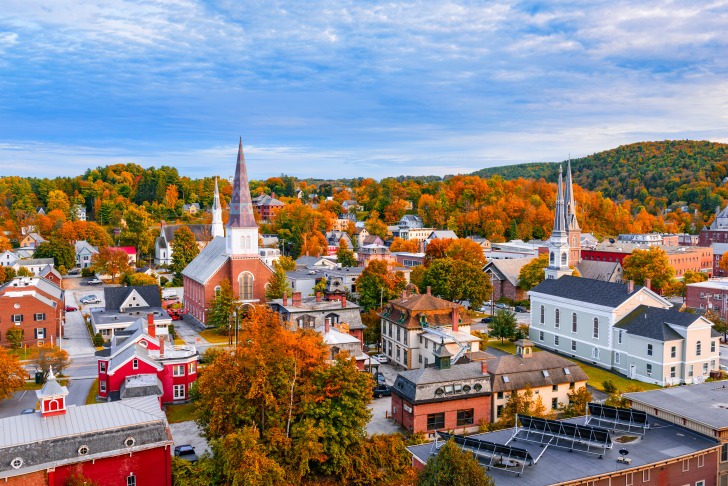Vermont, with its picturesque Green Mountains, charming small towns, and emphasis on community, consistently earns high rankings as one of the best states to live in. However, like any state, Vermont has its share of cities and towns that present challenges for residents. This article explores five less-than-ideal places to live in Vermont, examining factors such as cost of living, crime rates, economic opportunities, and access to amenities.
Important Note: It’s crucial to remember that determining “worst” places to live depends on individual viewpoints. Some people might relish the lower costs of a less prosperous area, while others seek the vibrancy of a more expensive place with better employment prospects. This article aims to highlight places with particular challenges that should be carefully considered before relocating.
1. Bennington
Bennington, located in the southwestern corner of Vermont, struggles with economic decline and social issues. Once a manufacturing hub, the town has seen factory closures and job losses. This leads to a high level of poverty and a lack of promising job opportunities, contributing to social problems like substance abuse. While the cost of housing is relatively low compared to other Vermont cities, the low wages in the area may not offset the lack of economic dynamism.
2. Newport
Situated near the Canadian border, Newport offers beautiful scenery but contends with limited economic opportunities and a sense of isolation. The town has lost population in recent years, further diminishing job prospects and access to essential goods and services. While appealing for those seeking peace and quiet, Newport may feel too remote and lacking in amenities for individuals who desire a more convenient and connected lifestyle.
3. Barre
Known as the “Granite Capital of the World,” Barre has a rich history in granite mining but faces modern challenges. While the city has relatively affordable housing, its economy has not fully diversified beyond its traditional industry. This can lead to limited job opportunities outside the granite sector. Barre also struggles with above-average crime rates compared to other Vermont communities, which may deter potential residents.
4. Rutland
Vermont’s third-largest city, Rutland, experiences a mixed reality. Although it has more job opportunities than smaller towns, its economy has stagnated in recent years. The city contends with higher-than-average poverty and crime rates. While housing prices are below some more affluent areas of Vermont, the lack of upward economic mobility could create long-term difficulties for residents.
5. St. Johnsbury
Located in Vermont’s Northeast Kingdom, St. Johnsbury exudes a historic charm but faces economic hardship. The town was once a regional commercial center, but its traditional industries have declined over time. This has led to a higher unemployment rate and below-average median household income. Additionally, St. Johnsbury can feel isolated, especially during the harsh winter months, which may not be ideal for those seeking a more connected community experience.
Counterpoint: The Importance of Perspective
While the cities and towns mentioned above present difficulties, it’s essential to acknowledge that “worst” is subjective. People have vastly different priorities when choosing a place to live. Here are some factors suggesting why someone might enjoy living in these locations despite the challenges:
- Affordability: For individuals on a fixed income, like retirees, the lower housing costs in these towns may be a significant advantage compared to more expensive areas of Vermont.
- Rural Lifestyle: Some individuals actively seek out a slower pace of life and a strong sense of community, which can still be found in smaller, less prosperous towns in Vermont.
- Outdoor Recreation: Many of the less-than-ideal towns are located close to Vermont’s natural beauty, making them attractive to those who prioritize access to outdoor activities over urban amenities.
Conclusion
Vermont is a generally desirable place to live, but like anywhere, it has its less glamorous corners. The cities and towns discussed in this article – Bennington, Newport, Barre, Rutland, and St. Johnsbury– present challenges such as economic decline, limited job prospects, or isolation. However, “worst” is always subjective, and it’s essential to research carefully and consider your priorities before deciding on where to live.
For those considering a move to Vermont, here are some resources to aid in making an informed decision:
- Vermont Department of Economic Development: (https://accd.vermont.gov/) – Offers data on communities, industries, and job opportunities throughout the state.



